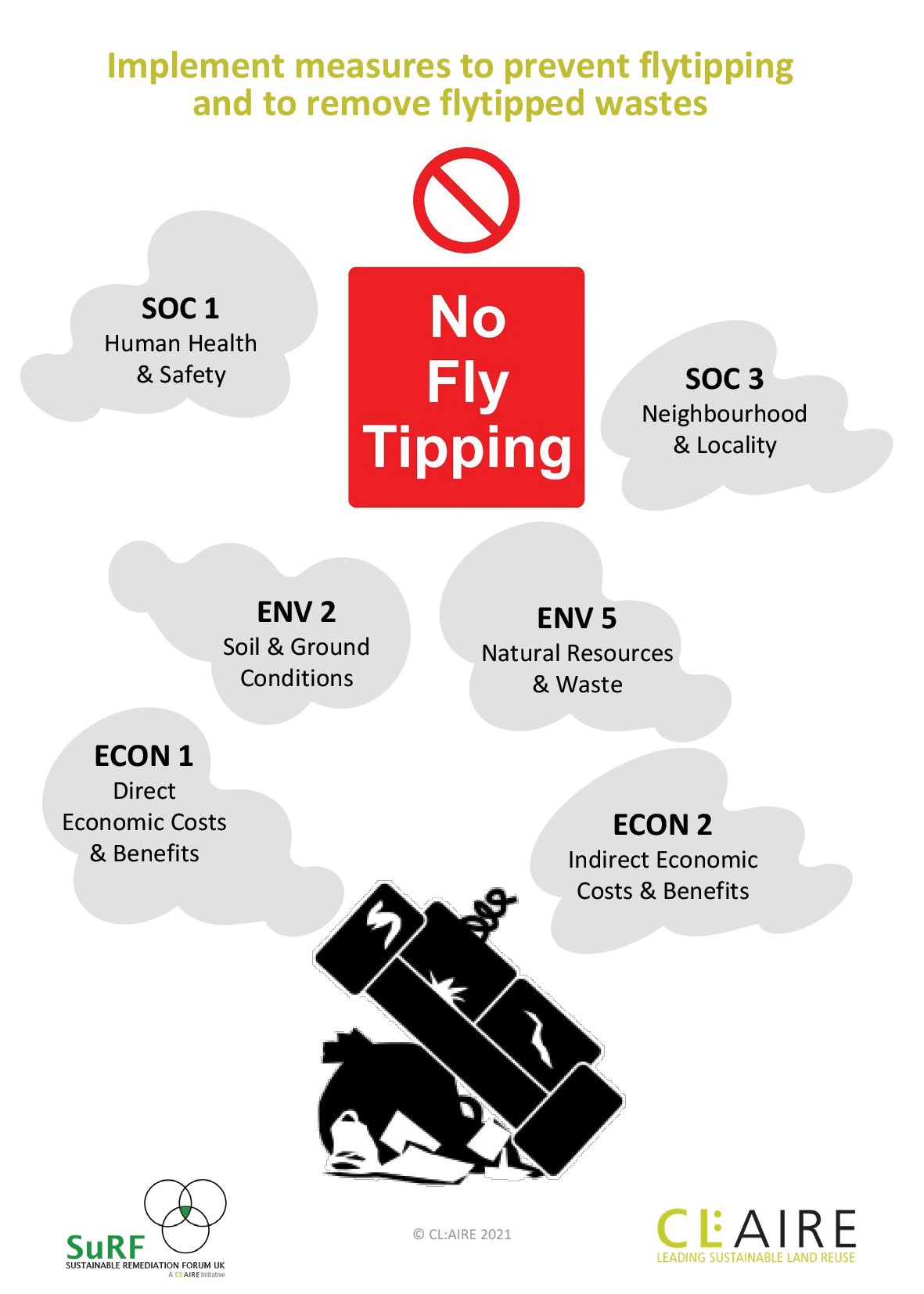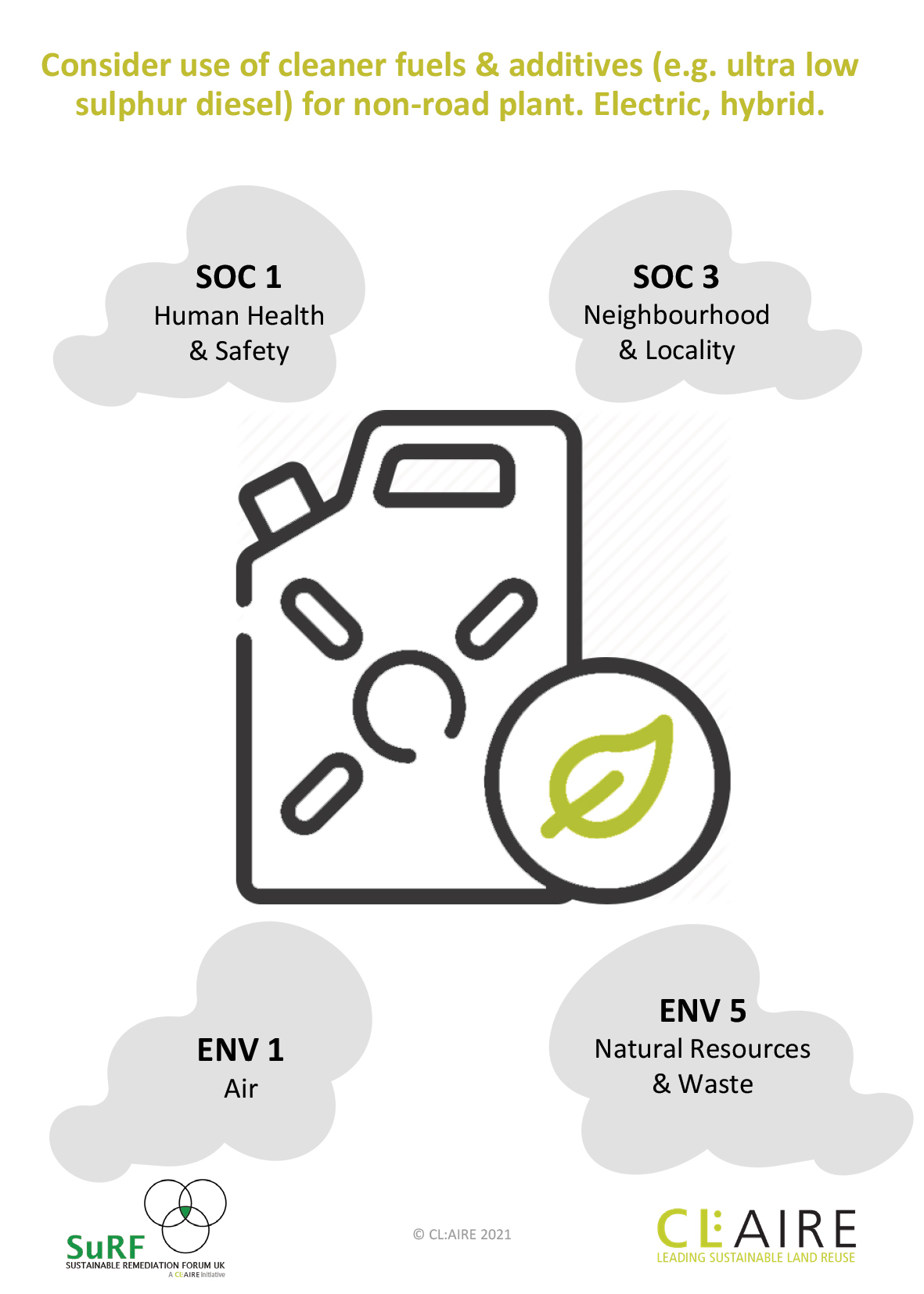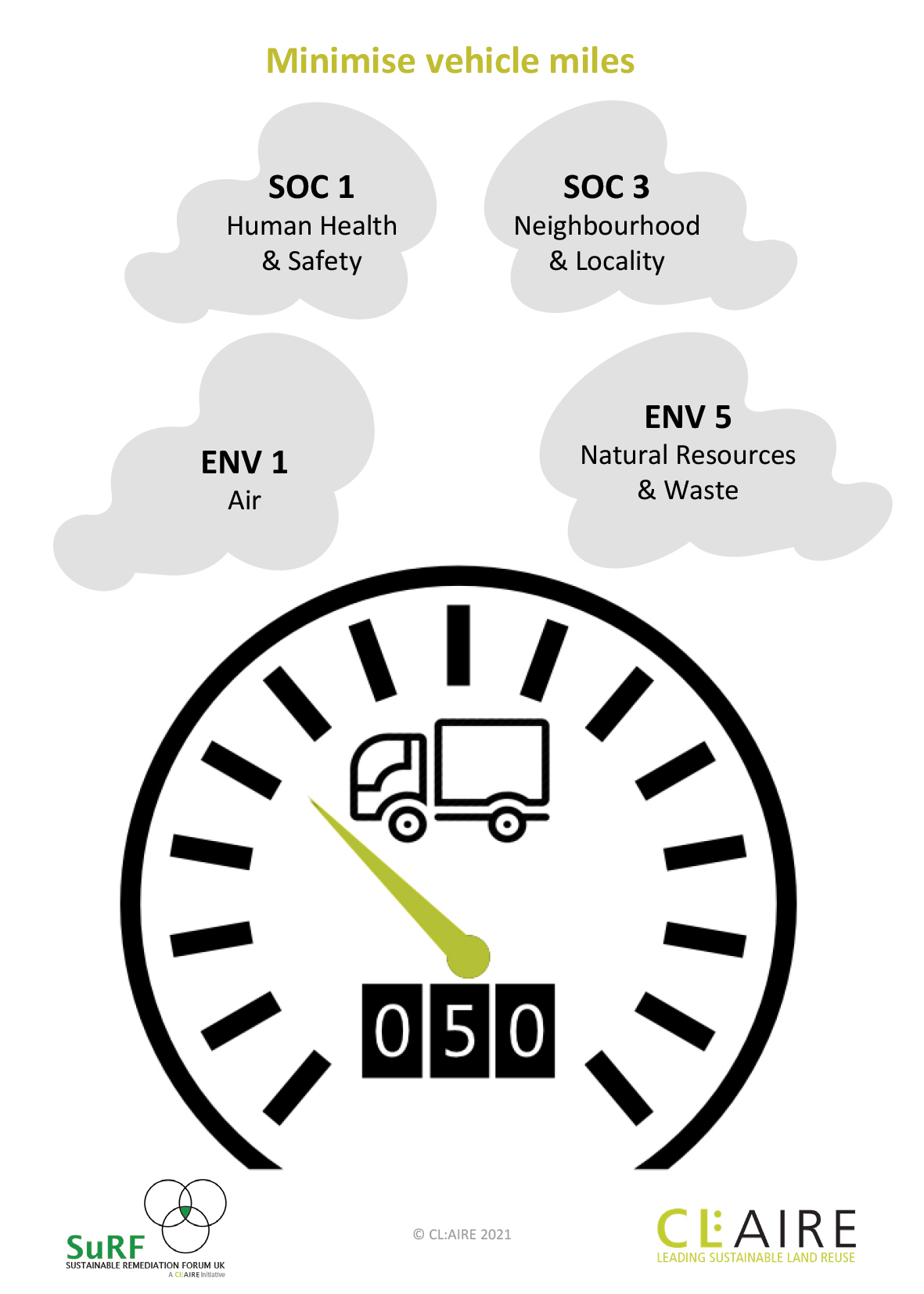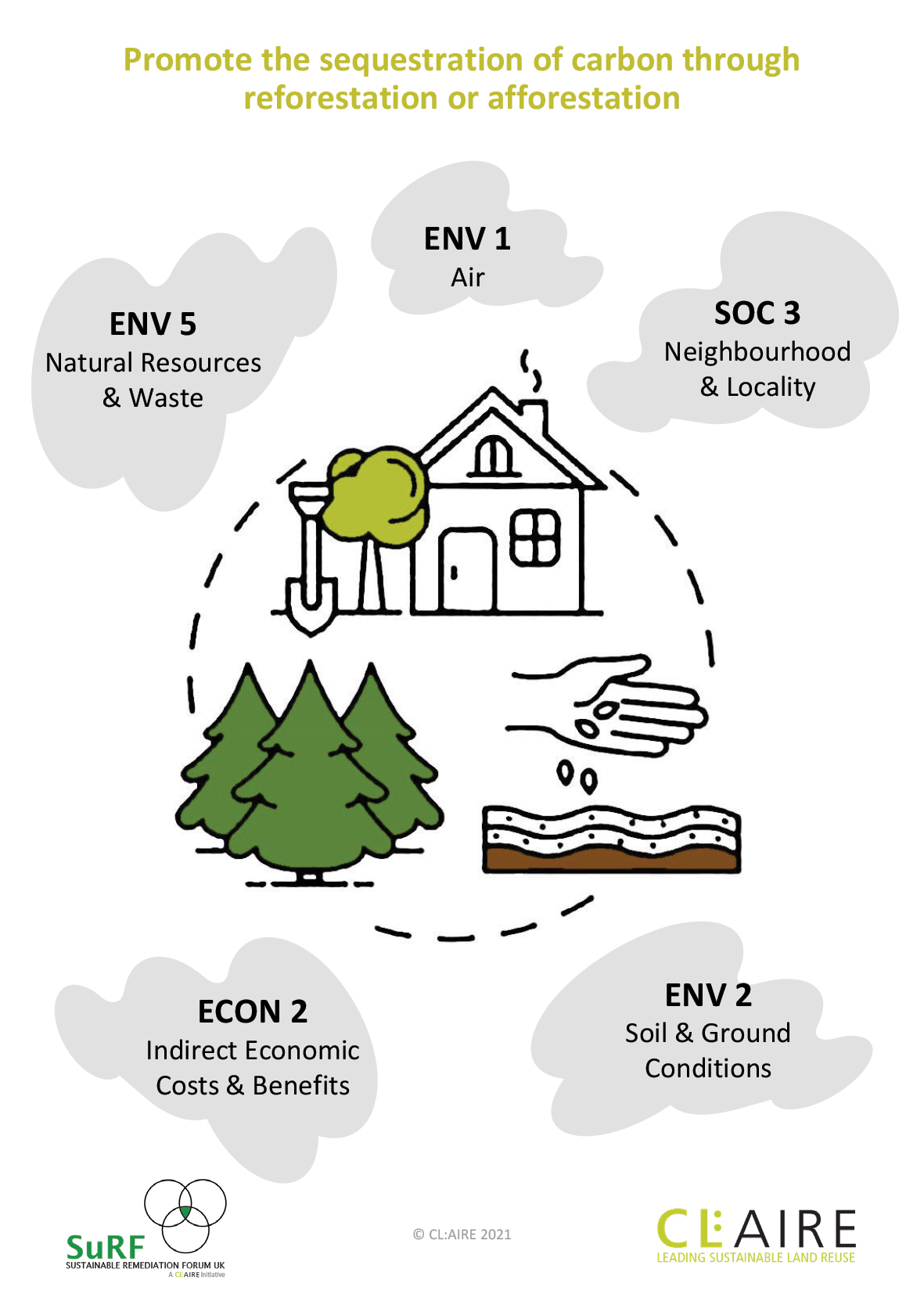
Given renewed emphasis on the environmental impact of construction, the UK Sustainable Remediation Forum (SuRF-UK) has recently updated its guidance on sustainable management practices (SMPs). These offer an easy way to improve the environmental, social and economic performance of a contaminated land project or portfolio of works – at any stage.
The document sets out a simple process to encourage sustainable thinking and decision-making across all land contamination management, in particular activities that do not necessarily need a formal sustainability assessment.
It identifies a common set of 182 SMPs that can be applied by the land management professions, including surveyors. Examples are included in Table 1, along with the benefits that SMPs could bring. The guidance also contains a spreadsheet with a common set of SMPs. Users can identify and refine the list based on their project stage, or the particular aspect of sustainability they are targeting.
| SMP example | Benefit |
| Establish criteria in the specification to ensure that suppliers provide more sustainable products and services. | Sustainable procurement helps ensure value for money and lower operational costs while protecting the environment and bringing wider societal benefits. |
| Plan the development layout with the aim of managing soil and groundwater risks, thus minimising the remediation required. | Including information on land contamination in regional and site-specific planning means its management can be integrated with the development process. This enables remediation to be optimised by combining conventional remediation approaches, such as excavation or capping, with land-use controls designed to limit exposure to soil impacts. |
| Consider the use of a mobile laboratory or on-site field testing techniques to reduce the need to send samples elsewhere and improve the spatial resolution of contamination data by processing a higher number of samples quicker than a conventional laboratory. | The use of mobile laboratories to quickly process a high number of field samples to improve understanding of the contaminant distribution at a site has been shown to improve sustainability. It reduces the need for multiple phases of investigation and associated travel and waste as well as helping to develop a robust understanding of the soil and groundwater risks at the site. |
Table 1: Examples of SMPs with the associated benefits of implementing them on a project
| SMP example | Benefit |
| Establish criteria in the specification to ensure that suppliers provide more sustainable products and services. | Sustainable procurement helps ensure value for money and lower operational costs while protecting the environment and bringing wider societal benefits. |
| Plan the development layout with the aim of managing soil and groundwater risks, thus minimising the remediation required. | Including information on land contamination in regional and site-specific planning means its management can be integrated with the development process. This enables remediation to be optimised by combining conventional remediation approaches, such as excavation or capping, with land-use controls designed to limit exposure to soil impacts. |
| Consider the use of a mobile laboratory or on-site field testing techniques to reduce the need to send samples elsewhere and improve the spatial resolution of contamination data by processing a higher number of samples quicker than a conventional laboratory. | The use of mobile laboratories to quickly process a high number of field samples to improve understanding of the contaminant distribution at a site has been shown to improve sustainability. It reduces the need for multiple phases of investigation and associated travel and waste as well as helping to develop a robust understanding of the soil and groundwater risks at the site. |
SMPs and sustainable remediation
SMPs fit into SuRF-UK's broader sustainable remediation framework, which allows assessors to identify remediation strategies, techniques and technologies that are more explicitly linked to the goals of sustainable development.
The SuRF-UK sustainable remediation framework has widespread support across the contaminated land sector in the UK, from both practitioners and regulators. It is underpinned by the contaminated land regime, which was set out in Part 2A of the Environmental Protection Act 1990 and establishes a risk-based approach to contaminated land.
Risk in this context is a combination of the likelihood that harm will occur as a result of land contamination and the scale and seriousness of such harm if it did occur. Contaminated land professionals use the source pathway to assess risk. The source is the contaminant or pollutant in soil, sediments or water that has the potential to cause harm and the pathway is the route by which the contaminant reaches the receptor.
Recent guidance published by the Environment Agency provides more information on risk-based approaches to contaminated land management. This approach is supported by a robust range of standards, codes of practice and technical guidance published by authoritative institutions and organisations.
Using SMPs to change behaviour and add value
SMPs are not necessarily additional tasks, over and above standard practice. Instead they are a way of changing behaviours, or a means of reducing the project's cost, use of natural resources or the impact on a community or the environment, such as spillages, or complaints. This improves the sustainability of a project without requiring a formal sustainability assessment, as described in the SuRF-UK framework.
Benefits for practitioners and clients include:
-
reducing emissions
-
making more efficient use of energy and natural resources
-
minimising waste, and optimising recycling and reuse
-
improving remediation so secondary impacts are reduced
-
achieving or exceeding corporate targets, and contributing to the United Nations Sustainable Development Goals (SDGs).
SMPs are mapped against a checklist of indicator categories that help decision-makers consistently and transparently consider a range of factors in sustainability assessments.
The list includes 15 indicator categories, across the three pillars of sustainability:
-
environment (env)
-
social (soc)
-
economic (econ).
These categories have been benchmarked against the 17 SDGs, and are directly linked to 13 of them. Some example SMPs and the related indicators can be seen in Figures 1–4.
Implementing the SMPs in practice
The guidance includes two case studies showing how different companies have adopted SMPs.
National Grid Property (NGP) took the set of common SMPs and reviewed them to identify the most relevant for its work. NGP now shares this list with its contractors at the tender stage. Progress is reviewed regularly during the project and tracked centrally.
Shell used the SMPs in two distinct ways: first as a requirement for consultants to consider before and during work; and second as part of an assessment that identifies the SMPs that offer the greatest sustainability benefits when applied across a portfolio.
How surveyors can use SMPs
Surveyors have an important role in many aspects of contaminated land management, especially on large-scale remediation projects. Their roles cover issues from procurement at the beginning through to the practical aspects of zoning between sensitive or non-sensitive areas and the landscaping associated with large earthworks. SMPs are applicable to all areas of contaminated land management, as well as similar projects in related sectors such as building construction or engineering.
These practices support a sustainable approach, and add value by enhancing the benefits and mitigating the negative impacts of processes on site. The SuRF-UK guidance gives surveyors a quick and robust way of identifying applicable SMPs for their projects, and the tools to communicate the sustainability benefits these offer. If the surveying profession adopts SMPs, this will help shift thinking in the sector to make projects as sustainable as possible.
Further information is available free of charge from CLAIRE, including a video describing sustainable remediation and supplementary reports to the Framework for Assessing the Sustainability of Soil and Groundwater Remediation.
Richard Gill is a member of the SuRF-UK steering group
Contact SuRF-UK: Email
Related competencies include: Contaminated land, Environmental Management, Sustainability





